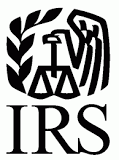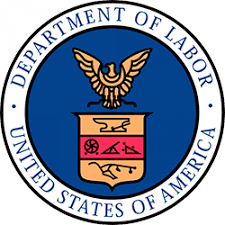On May 4, 2020, the Employee Benefits Security Administration (EBSA, which is part of the U.S. Department of Labor) and the Internal Revenue Service (IRS) issued joint guidance extending certain timeframes otherwise applicable to group health plans, disability and other welfare plans, pension plans, and their participants and beneficiaries under ERISA and the Code.
This guidance will require Plan Sponsors to temporarily revise their administrative practices and their form notices used in connection with COBRA, HIPAA’s Special Enrollment rights, and ERISA Claim Procedures.
I. Background
HIPAA requires group health plans to provide special enrollment rights for certain people upon the loss of eligibility for other coverage, or upon the addition of a dependents due to birth, adoption, etc. Generally, group health plans must allow such individuals to enroll in the group health plan if they are otherwise eligible and if enrollment is requested within 30 days of the occurrence of the event.
COBRA permits qualified beneficiaries who lose coverage under a group health plan to elect continuation health coverage. COBRA generally provides a qualified beneficiary a period of at least 60 days to elect COBRA continuation coverage under a group health plan. Plans are required to allow payment of premiums in monthly installments, and plans cannot require payment of premiums before 45 days after the day of the initial COBRA election. COBRA continuation coverage may be terminated for failure to pay premiums timely.
Under the COBRA rules, a premium is considered paid timely if it is made not later than 30 days after the first day of the period for which payment is being made. Notice requirements prescribe time periods for employers to notify the plan of certain qualifying events and for individuals to notify the plan of certain qualifying events or a determination of disability. Notice requirements also prescribe a time period for plans to notify qualified beneficiaries of their rights to elect COBRA continuation coverage.
ERISA requires plans to establish and maintain reasonable claims procedures and imposes additional rights and obligations with respect to internal claims and appeals and external review for non-grandfathered group health plans.
II. Temporary Extensions Under the Guidance
All of the foregoing provisions include timing requirements for certain acts in connection with employee benefit plans, some of which have been temporarily modified by the new guidance. These changes, and the implications for Plan Sponsors, are summarized below.
A. Relief for Plan Participants, Beneficiaries, Qualified Beneficiaries, and Claimants
Subject to a one year statutory duration limitation, all group health plans, disability and other employee welfare benefit plans, and employee pension benefit plans subject to ERISA or the Code must disregard the period from March 1, 2020 until sixty (60) days after the announced end of the National Emergency (the “Outbreak Period”) for all plan participants, beneficiaries, qualified beneficiaries, or claimants wherever located in determining the following periods and dates—
(1) The 30-day period (or 60-day period, if applicable) to request special enrollment under ERISA section 701(f) and Code section 9801(f)
Implications for employers:
- Work with your third-party administrator and insurance carriers to ensure the extended special enrollment period is implemented for the duration of the Outbreak Period, which could require retroactive coverage as far back as March 1.
- Determine whether and how to communicate the extension to employees.
(2) The 60-day election period for COBRA continuation coverage under ERISA section 605 and Code section 4980B(f)(5)
(3) The date for making COBRA premium payments pursuant to ERISA section 602(2)(C) and (3) and Code section 4980B(f)(2)(B)(iii) and (C)
(4) The date for individuals to notify the plan of a qualifying event or determination of disability under ERISA section 606(a)(3) and Code section 4980B(f)(6)(C)
Implications for Employers:
- This exacerbates the adverse selection issue inherent in COBRA because Plans may have to provide retroactive coverage for many months.
- The problem is made worse by the fact that, even though qualified beneficiaries theoretically have to pay for the retroactive coverage, if they elect COBRA right after the qualifying event, they do not have to pay until after the Outbreak Period ends. This means a qualified beneficiary could elect COBRA and receive the coverage) and then subsequently decide not to pay for it. Plan Sponsors and insurers will then have the option of retroactively terminating the coverage and trying to adjust the claims already paid.
- Work with your third-party administrator and insurance carriers to ensure they have implemented the extended COBRA periods.
- Either temporarily revise your COBRA notices and forms or ensure a temporary cover is added to all COBRA communications as necessary to inform employees and qualified beneficiaries of the extended timeframes.
(5) The date within which individuals may file a benefit claim under the plan’s claims procedure pursuant to 29 CFR 2560.503-1
(6) The date within which claimants may file an appeal of an adverse benefit determination under the plan’s claims procedure pursuant to 29 CFR 2560.503-1(h)
Implications for Employers:
- Work with your third-party administrator and insurance carriers to ensure they have implemented the extended claims periods.
- Either temporarily revise your claims notices and forms or ensure a temporary cover is added to all claims communications as necessary to inform employees and qualified beneficiaries of the extended timeframes.
- This will impact health flexible spending accounts (“FSAs”) and health reimbursement arrangements (“HRAs”) that have run-out periods that extended beyond March 1, 2020. Because the Outbreak Period began on March 1, 2020, any health FSAs and HRAs that have March or April deadlines for submitting prior-year expenses for reimbursement, will need to extend the deadline until 60 days after the Outbreak Period ends to submit expenses for reimbursement for the 2019 plan year.
(7) The date within which claimants may file a request for an external review after receipt of an adverse benefit determination or final internal adverse benefit determination pursuant to 29 CFR 2590.715-2719(d)(2)(i) and 26 CFR 54.9815-2719(d)(2)(i), and
(8) The date within which a claimant may file information to perfect a request for external review upon a finding that the request was not complete pursuant to 29 CFR 2590.715-2719(d)(2)(ii) and 26 CFR 54.9815-2719(d)(2)(ii)
Implications for employers:
- Work with your third-party administrator and insurance carriers to ensure they have implemented the extended claim review periods.
- Either temporarily revise your claims notices and forms or ensure a temporary cover is added to all claims communications as necessary to inform employees and qualified beneficiaries of the extended timeframes.
B. Relief for Group Health Plans
With respect to group health plans, and their sponsors and administrators, the Outbreak Period shall be disregarded when determining the date for providing a COBRA election notice under ERISA section 606(c) and Code section 4980B(f)(6)(D).
Implication for Employers:
- Plan administrators are not required to provide the COBRA election notice during the Outbreak Period. As a practical matter, however, plan administrators likely will want to timely provide election notices to encourage qualified beneficiaries to timely elect and pay for COBRA coverage.


